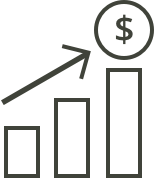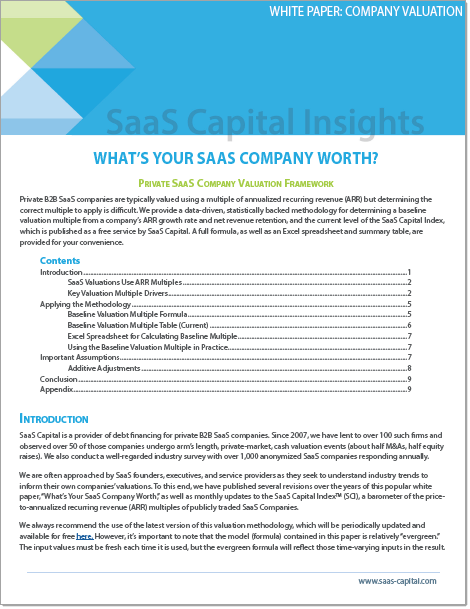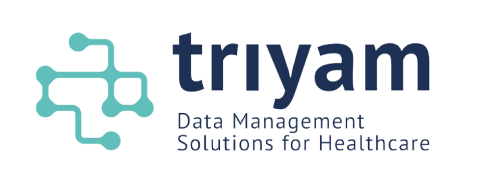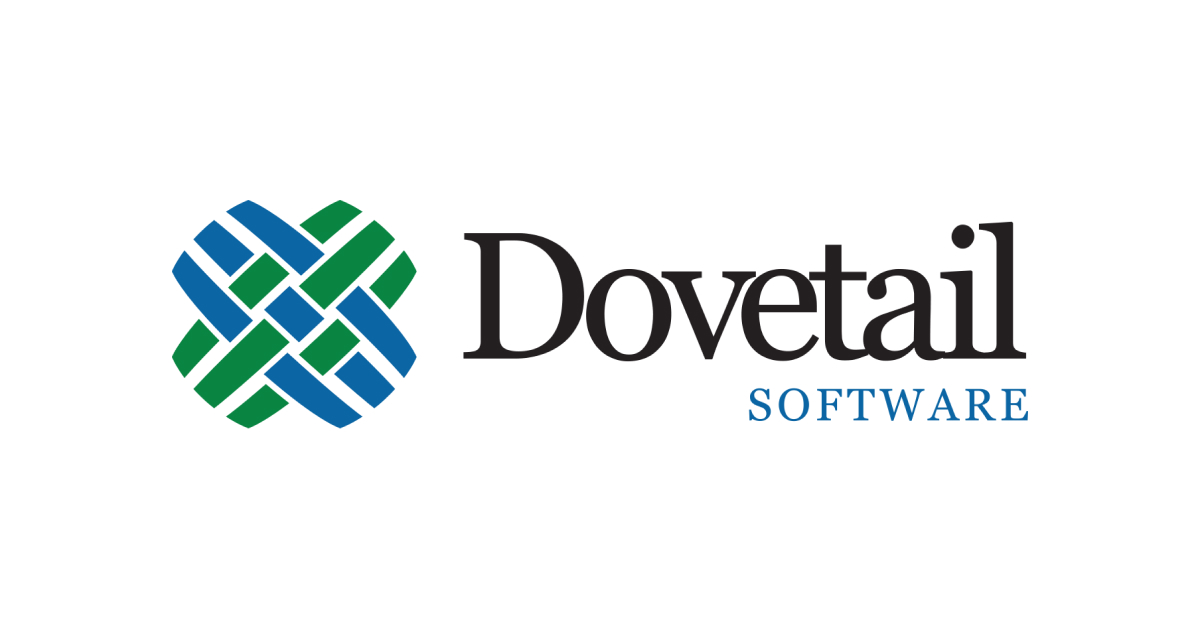Scale your business with growth capital
SaaS Capital® has been lending to SaaS companies since 2007. It’s time to put our expertise to work for you.
Nice to meet you!
Streamlined access to non-dilutive capital for qualified SaaS companies
Lending to SaaS companies is our singular focus. Our underwriting processes and our products are attuned to the needs of your business.
Work with the SaaS Capital® team and experience:
- A transparent process tailored to SaaS businesses.
- Credit facilities with more availability and fewer restrictions.
- Quick decisions for qualified businesses; current venture-backing not required.
- Access to SaaS expertise and a decade worth of research data.

Approach
SaaS Capital pioneered alternative lending to SaaS. Since 2007 we have spoken to thousands of companies, reviewed hundreds of financials, and funded 100+ companies. We can make quick decisions. The typical time from first “hello” to funding is just 5 weeks.

Product
Debt can be a powerful growth tool for SaaS companies. Properly structured, credit facilities can minimize dilution, while availability grows as the business scales. Our MRR line-of-credit offers high capital availability, few covenants, and long commitment periods.

Criteria
SaaS Capital funds “scale-up” SaaS companies with $3 million or more in ARR. Companies do not need to be profitable or venture-backed to qualify, but they do need to have a solid history of retention.
We like to write things for you.
Featured Research

Research
What's Your SaaS Company Worth?
Private B2B SaaS companies are typically valued using a multiple of annualized recurring revenue (ARR) but determining the correct multiple to apply is difficult. We provide a data-driven, statistically backed methodology for determining a baseline valuation multiple from a company’s ARR growth rate and net revenue retention, and the current level of the SaaS Capital Index, which is published by SaaS Capital®. A full formula, as well as an Excel spreadsheet and summary table, are provided for your convenience.
Read MoreBlog Post
Interest Rates: More to Know Than Just the Headline Number
While private rates in the mid-to-high teens remain elevated compared to the past decade-plus, they are in line with rates for sector peers in the public market. Moreover, from a borrower’s perspective, these rates may actually be considered relatively attractive when one accounts for current US Treasury rates.
Blog Post
2025 Private SaaS Company Valuations
The SaaS Capital Index™ stands at 7.0 times current run-rate annualized revenue. Data for bootstrapped companies yields a predicted private SaaS company valuation multiple of 4.8x while data for equity-backed companies yields a predicted valuation multiple of 5.3x.
Blog Post
How to have a 95% Gross Revenue Retention Selling SaaS to Small Businesses
The article examines the methodology behind ServiceTitan's reported 95% gross revenue retention (GRR) in its IPO documentation, noting that the approach excludes downsells and only accounts for complete churns, which can result in a higher GRR figure. While the 95% figure is impressive, the analysis suggests that a more typical annualized GRR for small businesses in the building trades would likely be lower, aligning with industry norms.
Driving better outcomes
Success Stories
Read our case studies to learn why SaaS Capital is the “just right” partner for SaaS businesses, how growth debt positioned a company for acquisition, and how a company created $28.8 million of net equity value.
Learn More









